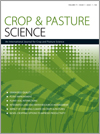CP19005An integrated framework for predicting the risk of experiencing temperature conditions that may trigger late-maturity alpha-amylase in wheat across Australia
 , Andries B. Potgieter, Daryl J. Mares, Kolumbina Mrva, Jason Brider and Graeme L. Hammer
, Andries B. Potgieter, Daryl J. Mares, Kolumbina Mrva, Jason Brider and Graeme L. Hammer
Late-maturity alpha-amylase (LMA) expression in some wheat varieties is a critical issue for the Australian wheat industry, but the relative risks of LMA incidence across the wheatbelt are not well understood. A simulation modelling framework was developed and analysis conducted to determine risks associated with one set of temperature conditions that may trigger LMA. Application of an LMA simulation framework can assist industry to quantify actual risks of LMA and support better informed decision-making for managing LMA risk.
CP19005 Abstract | CP19005 Full Text | CP19005PDF (3.6 MB) Open Access Article




